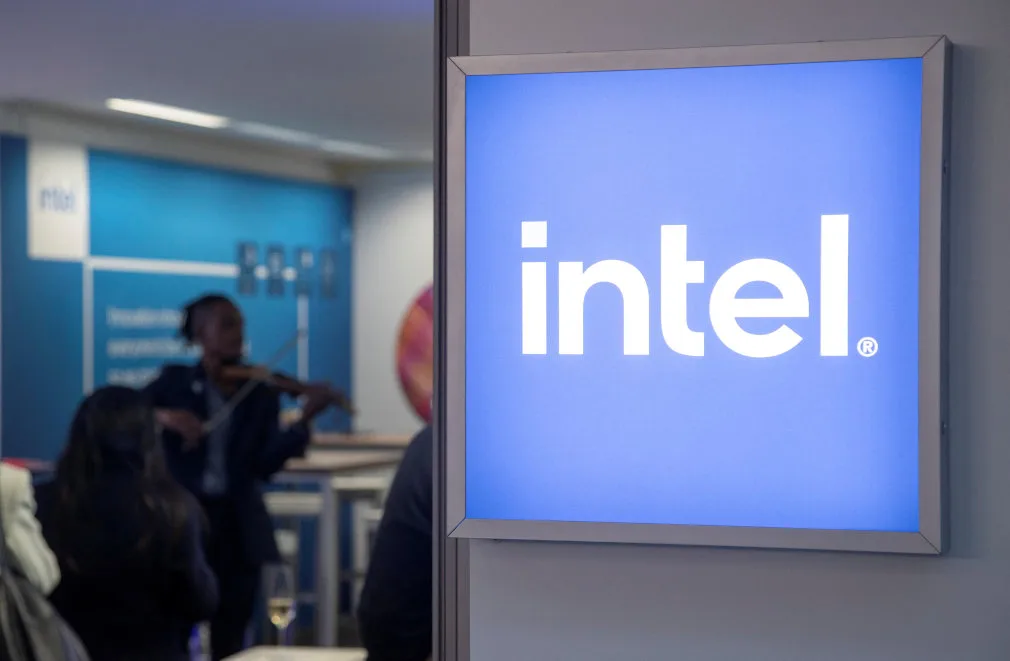
Intel shares fell by up to 20% in extended trading on Thursday, August 1, after the company announced it would lay off over 15% of its workforce. This move is part of a $10 billion cost-reduction plan following quarterly results that fell short of analyst expectations.
The company revealed it would not pay its dividend in the fiscal fourth quarter of 2024 and would reduce full-year capital expenditures by over 20%.
Quarterly Performance vs. Analyst Estimates:
- Earnings per share: 2 cents adjusted vs. 10 cents expected
- Revenue: $12.83 billion vs. $12.94 billion expected
In the fiscal second quarter ending June 29, Intel reported a 1% decline in revenue year over year. The company experienced a net loss of $1.61 billion, or 38 cents per share, compared to a net income of $1.48 billion, or 35 cents per share, in the same period last year.
Key Factors Contributing to Loss
CEO Pat Gelsinger attributed the loss to the decision to rapidly produce Core Ultra PC chips designed for artificial intelligence workloads. He explained that the investments to drive the AI PC category were expected to pressure margins in the near term. Gelsinger believes these trade-offs are worth it, forecasting that the AI PC market will grow from less than 10% today to more than 50% by 2026.
Additionally, Intel accelerated the move of Intel 4 and 3 chip wafers from a plant in Oregon to one in Ireland. This transition will incur higher costs in the short term but is expected to result in a wider gross margin in the future, according to Dave Zinsser, Intel’s finance chief. Zinsser also noted that pricing was more competitive than planned during the quarter, with companies like AMD and Qualcomm working to take market share from Intel.
Intel’s Client Computing Group, responsible for PC chips, reported $7.41 billion in revenue, a 9% increase that matched analyst expectations. The company stated that AI-friendly PC chips exceeded internal expectations and are on track for over 40 million unit shipments in 2024. However, the Data Center and AI unit posted $3.05 billion in revenue, down 3% and lower than the $3.14 billion expected.
Future Projections
For the fiscal third quarter, Intel projects an adjusted net loss of 3 cents per share on $12.5 billion to $13.5 billion in revenue, compared to analysts’ expectations of adjusted net earnings of 31 cents per share on $14.35 billion in revenue.
Zinsser indicated that data center revenue should grow sequentially in the second half of the fiscal year as demand for traditional servers improves modestly. However, he highlighted weakened consumer and commercial spending, particularly in China, and a continued focus on cloud-based servers for AI as reasons for reducing Intel’s 2024 total addressable market.
Recent Developments
During the fiscal second quarter, Intel announced an $11 billion investment from Apollo in a joint venture for a chip manufacturing plant in Ireland. The company also introduced Xeon 6 server processors and Gaudi 3 accelerators for AI tasks.
Additionally, Intel disclosed that the U.S. Commerce Department revoked export licenses for consumer items to a Chinese customer, widely believed to be Huawei. Despite this, Intel’s fiscal second-quarter revenue remained within the previously announced range of $12.5 billion to $13.5 billion.
The planned job cuts, affecting about 15,000 employees, will primarily take place this year. Gelsinger emphasized the need to align Intel’s cost structure with its new operating model, addressing high costs and low margins. Intel anticipates around $20 billion in cuts this year, $17.5 billion in 2025, and further reductions in 2026.
The layoffs are part of a broader plan to reduce spending by $10 billion in 2025, following disappointing second-quarter earnings. Gelsinger acknowledged that Intel has struggled to capitalize on the AI boom compared to other hardware companies like Nvidia. Despite leading the CPU revolution 25 years ago, Intel has been slow to embrace newer computing waves such as smartphones and AI. Annual revenues at Intel fell by $24 billion between 2020 and 2023, despite a 10% increase in its workforce. This contrasts sharply with other chipmakers that have seen revenues and valuations soar during the AI boom.
Beyond layoffs, Intel will offer a voluntary departure program to employees next week and announce an enhanced retirement offering for eligible employees.
Prior to the after-hours drop, Intel stock had lost 42% of its value this year, while the S&P 500 index had risen nearly 14%.
Looking ahead, Intel is relying on Taiwan’s TSMC for AI-compatible Lunar Lake PC chips, which reached production release last month. The next step is to launch the next-generation Panther Lake chips based on its own manufacturing pipeline, expected to yield a better cost structure by 2026.
Featured Image courtesy of Arnd Wiegmann/REUTERS
Follow us for more Intel news updates.
